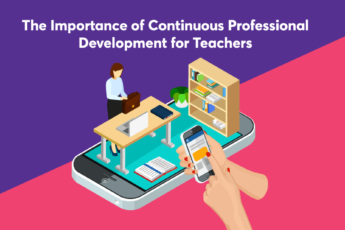From Memorization to Understanding: Transforming Teaching Methods
In India’s vibrant and diverse educational landscape, the winds of change are sweeping through traditional classrooms. Not long ago, teaching often revolved around rote memorization—teachers reciting lessons and students dutifully committing them to memory. While this method ensured exam success for many, it frequently failed to create thinkers and problem-solvers. Today, the focus is shifting. A more dynamic, student-centered approach—one that prioritizes understanding over memorization—is gaining ground.
The Shift from Memorization to Understanding in Indian Classrooms
For decades, Indian education heavily relied on memorization. From historical dates to mathematical formulas, students were expected to absorb and regurgitate information. While this helped them crack competitive exams, it rarely fostered a deep understanding of concepts. As a result, students struggled to apply their knowledge in real-world scenarios or think critically about complex issues.
India’s education system is now moving towards a more understanding-based model aligned with global trends and driven by the National Education Policy (NEP) 2020. This shift emphasizes holistic, interdisciplinary, and conceptual learning—where students don’t just learn what to think but how to think.
The Pitfalls of Memorization-Based Learning
Rote memorization creates learners who are great at answering “what” but falter when it comes to “why” or “how.” For example, a student might easily recall that the Battle of Plassey occurred in 1757 but might struggle to explain its implications for India’s colonial history. Similarly, they might memorize mathematical equations without understanding their real-world applications. This method:
- Stifles Creativity: There’s little room for students to think beyond the curriculum.
- Limits Critical Thinking: It prioritizes memorization over the exploration of ideas.
- Hampers Problem-Solving Skills: Students struggle with practical applications, leaving them underprepared for careers and life.
Why Understanding-Based Learning Is the Future
Understanding-based learning turns passive learners into active participants in their education. Students explore the “why” and “how” behind concepts, fostering deeper connections to the material. For example, instead of memorizing the boiling point of water, they might learn how altitude affects boiling and the science of thermodynamics. This approach nurtures:
- Critical Thinking and Problem-Solving: Students can apply concepts to novel situations.
- Engagement and Curiosity: Hands-on activities and discussions make learning exciting and relevant.
- Long-Term Retention: Concepts understood deeply remain with students far longer than memorized facts.
- Creativity: Students are encouraged to question, analyze, and innovate.
How Square Panda India Is Fostering Understanding-Based Learning
At Square Panda India, we recognize the transformative power of understanding-based learning and its alignment with the NEP 2020 vision. Here’s how we are driving this change:
- Teacher Empowerment: We provide educators with advanced training programs to help them adopt active and concept-driven teaching methods. By equipping teachers with modern pedagogical tools, we ensure they can effectively shift away from rote learning.
- Innovative Learning Tools: Our digital platforms and learning materials are designed to spark curiosity and encourage exploration. From adaptive learning systems to interactive modules, we bring lessons to life in ways that resonate with students.
- Localized Solutions: Recognizing the diversity of India’s learners, our solutions are tailored to regional contexts. We incorporate local languages, cultural relevance, and real-life scenarios to make education more relatable.
- Collaborative Learning Environments: Through workshops, games, and group activities, we foster peer interaction and collaborative learning, key components of understanding-based education.
The Indian Context: Why This Shift Matters
In India, where students often face immense academic pressure, understanding-based learning offers a refreshing change. It prepares students not just for exams but for life. Developing critical thinking and problem-solving skills equips them to navigate India’s competitive job market and contribute meaningfully to society.
Moreover, this approach aligns beautifully with the NEP’s emphasis on experiential learning, digital literacy, and interdisciplinary education. It’s not just about shaping better students but also better citizens.
Embracing Change for a Brighter Future
As India reimagines its classrooms, the transition from memorization to understanding marks a pivotal moment in education. By embracing this approach, we are nurturing a generation of learners who are innovative, adaptable, and prepared to tackle the complexities of the modern world.
At Square Panda India, we’re proud to lead this transformation, empowering educators, and creating an environment where every child can thrive. Together, we are shaping a future where learning goes beyond marks and becomes a tool for lifelong success.ce understanding-based learning, we are shaping a more innovative, creative, and adaptable generation of learners. At Square Panda India, we are proud to support educators in making this shift, ensuring that students develop the skills they need to thrive in an ever-changing world.




Leave a Comment